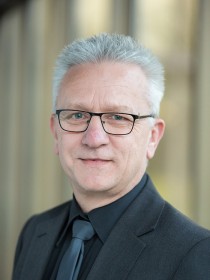TRANSMISSION SYSTEM OPERATORS SUBMIT SECOND DRAFT OF NETWORK DEVELOPMENT PLAN 2035, VERSION 2021
- Input from consultation phase incorporated into Network Development Plan
- Grid analyses for long-term scenario B 2040 confirm need for grid expansion
- Stability analyses reveal considerable need for reactive-power compensation systems
The transmission system operators (TSOs) 50Hertz, Amprion, TenneT and TransnetBW today submitted the second draft of the Network Development Plan (Netzentwicklungsplan, NEP) 2035, Version 2021 to the Federal Network Agency (Bundesnetzagentur, BNetzA) and published it on www.netzentwicklungsplan.de. Suggestions and comments from the public consultation process on the first draft of the NEP, which was conducted between 29 January and 5 March 2021, have been taken into consideration for the second draft. A total of around 3,300 comments were received, chiefly from private individuals. The large majority of these contributions (3,100) were submitted in the form of a standard letter.
Consultation on first draft
The comments received covered a wide range of issues. They will serve the TSOs as valuable references with regard to parameters and targets for the scenario framework for the next Network Development Plan (2023). The comments made were often linked to demands to meet the targets of the Paris Agreement on climate change. In addition, many contributors pointed out that the future use of green hydrogen will impact electricity grid planning. Large numbers of commenters also expressed their wish for greater stress to be placed on the development of innovative technologies.
The consultation process was also used to comment on specific network projects. The majority of comments sent in focused primarily on the cost and environmental impact of the projects.
Grid analyses in long-term scenario B 2040
Compared to scenario B 2035, scenario B 2040 demands an additional 550 km of AC grid upgrades. The further increase in transmission demand is mainly due to the higher level of demand for electricity and the greater level of feed-in from renewables. The installed capacity of offshore wind energy will increase by 10 gigawatts and the capacity of electrolysers by 5 gigawatts in line with the German government’s expansion targets for these technologies.
Cost-benefit analysis for interconnectors
In line with the requirements laid down by BNetzA, the TSOs have carried out cost-benefit analyses for a total of 6 cross-border power line projects, known as “interconnectors”, in the second draft of the NEP. The upshot: all of them demonstrate overall economic benefits, largely attributable to a substantial reduction in total system costs. All projects also lead to a reduction in carbon emissions and, for the most part, increase the integration of renewables.
Assessment of system stability
Based on scenario B 2035, the TSOs have carried out an assessment of the system stability of the grid, including the proposed grid measures, in the second draft of NEP 2035 (2021). These analyses reveal that reactive-power compensation systems with an installed capacity of 60 Gvar (gigavolt-amperes reactive) are required to meet the steady-state and controllable demand for voltage stability.
More information at www.netzentwicklungsplan.de
